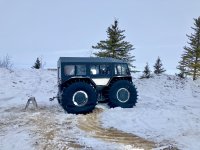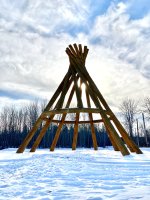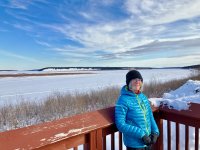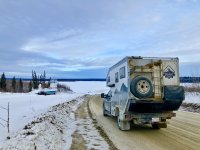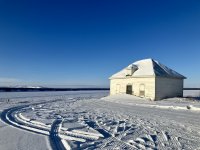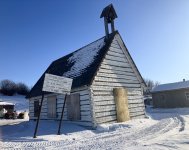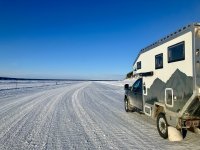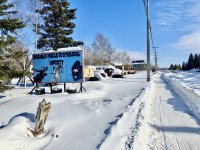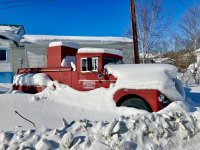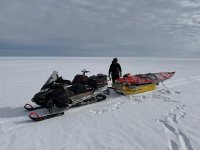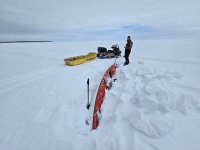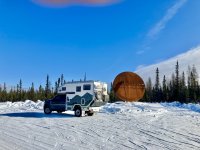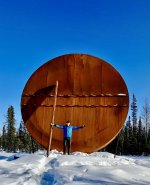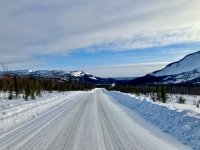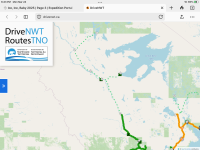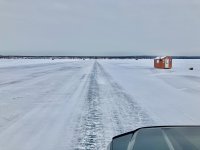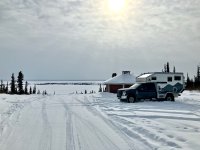A few observations on driving the Mackenzie Heritage Trail, generally applies to most winter roads.
1. LADD Ch.1 comms is very useful to call out location and direction when approaching blind hills and single lane bridges. These roads exist for winter resupply and semis should be expected anywhere at anytime. They are also very friendly, we often chatted about road conditions.
2. The winter road is roughest up to Norman Wells and improves as you go further North due to diminishing traffic. The most enjoyable section for us was the Colville Lake portion, a rollercoaster but very scenic.
3. Many short portions are steep, sharply curved, and off-camber so a well balanced rig is critical. High CG would be rather perilous!
4. Although my photos make it seem like a wide plowed track, you cannot trust the shoulders. They are soft and deep, will pull you off in a heartbeat. There were numerous craters where semis became embedded and we witnessed a road grader retrieving one pickup from the banks, and a few more vehicles just abandoned.
5. Obtaining gas is a logistical challenge. No one North of Ft Simpson sells on a Sunday. Furthermore, each community has different prices and hours. Locations are not accurately marked on Google Maps (surprise) so we just asked the first person we met. Sometimes you might have to telephone the operator and wait a short while, phone numbers are displayed. If you are desperate and outside the posted hours, a $50 callout fee will get service.
6. Your navigator can be an important asset to scan ahead for the telltale snow cloud or headlights of approaching traffic while the driver concentrates on the road immediately in front. Right seat responsibilities also included radio comms and wildlife scanning (our highlight was a lynx with two kits).
7. Boondocking outside of towns is straightforward, just don’t drive down any side road without evidence of previous traffic or you might not get back out. In larger towns, we attempted to contact the tourism or town office for advice/permission. Smaller hamlets won’t have these facilities and to avoid causing any concerns we will choose a spot out of town.
8. Fibre optic internet has arrived and strong local cell coverage (3G at minimum) can be expected in the vicinity of settlements but not inbetween so have you hardcopy and offline maps prepared.
The communities along the Mackenzie Heritage Trail are curious and welcoming of visitors. They are also cautious of covid and flu being brought in, which tempers hospitality a bit. Local leaders express a desire for the economic rewards of tourism so we try to talk up the basic needs of remote RV travel, ie, fuel, water, garbage disposal.

